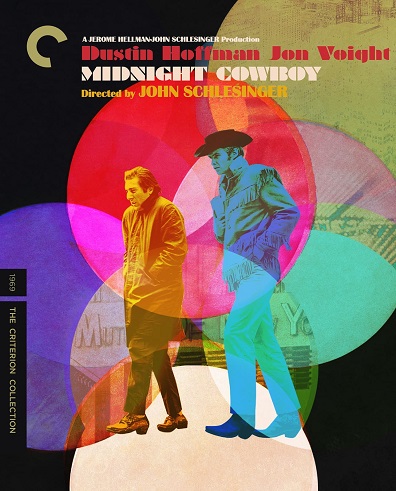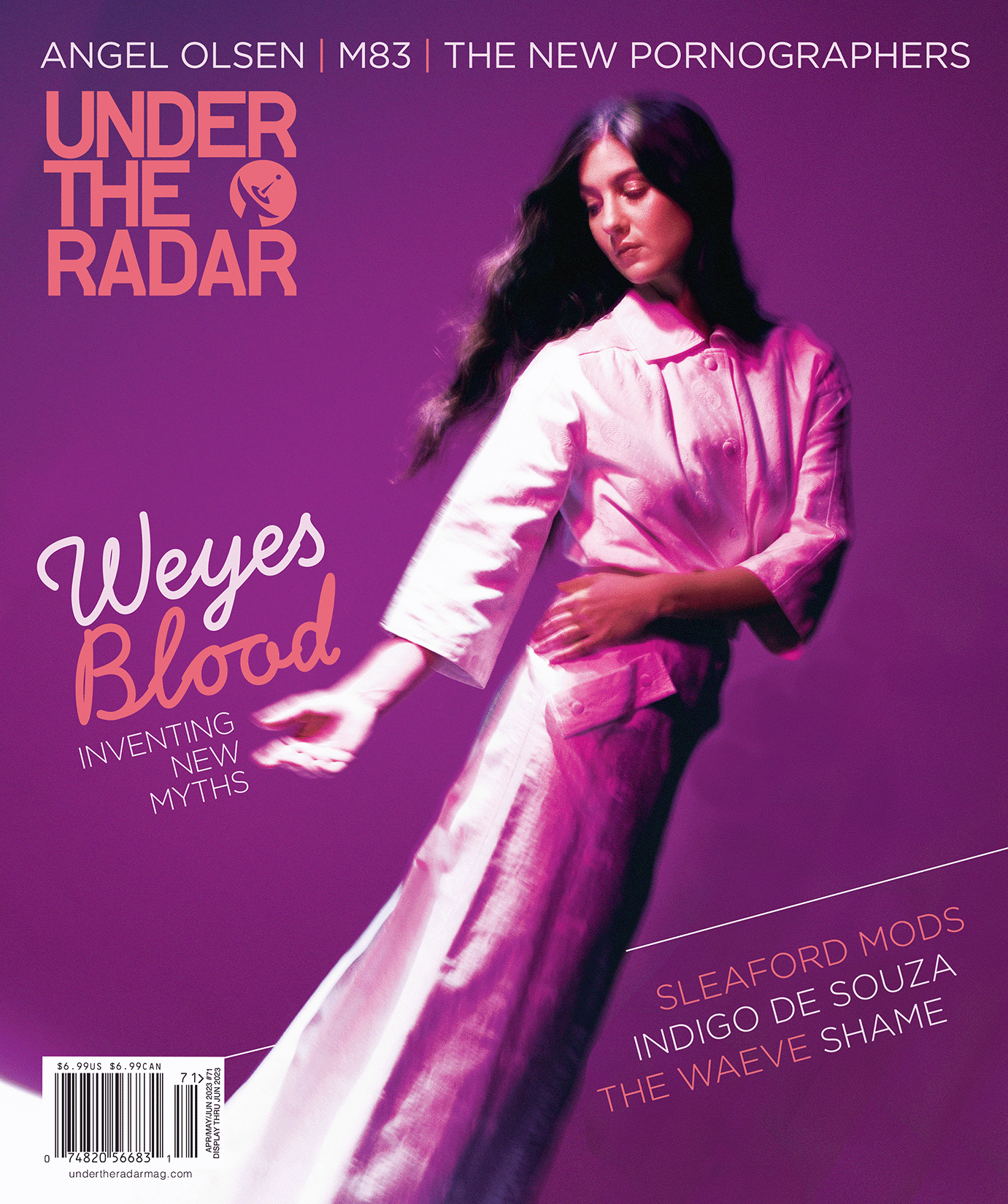
Midnight Cowboy
Studio: Criterion
Jul 03, 2018
Web Exclusive
![]()
“Everybody’s talkin’ at me.”
It’s both interesting and somewhat unfortunate that John Schlesinger’s Midnight Cowboy is invariably linked to its status as the first, and only, X-rated film to win an Academy Award for Best Picture. Partially because what winds up on screen is fairly tame by today’s standards, but also because it sets up an expectation and almost sets it at a remove from the story being told and the artful manner in which it’s depicted.
Joe Buck (Jon Voight) leaves his Texas town for New York City to embark on a life as a male prostitute under some notion that the women of the big city are just begging for what he has to offer. He sees himself as a Casanova in a cowboy hat. After discovering things aren’t as easy as he expected them to be, he encounters Enrico “Ratso” Rizzo (Dustin Hoffman), a street hustler with a bum leg who offers to show him the ropes. First, he’s hustling Buck, too, but eventually they form an unlikely bond.
There are a number of vantage points in which to look at Midnight Cowboy. In an excellent accompanying essay, Mark Harris, critic and author of Five Came Back, looks at its place in outsider cinema and uncomfortable place in the pantheon of LGBT films. The explicitly gay characters in Midnight Cowboy are closeted, very much fighting against their true selves. Two johns Buck encounters, a young student and an older out-of-towner, represent men on different ends of their lives who are struggling with sexuality and identity. They are dealing with shame, and in one case is almost welcoming violence on him for his “transgressions.” Then there’s the implication of Buck’s own fluid sexuality and his coming to terms with who he is.
Which is connected to the most curious piece of Midnight Cowboy: The flashbacks. Depending on Buck’s mood, the flashbacks take on a different tone. There are sequences of a young Buck giving his grandmother a massage, and then introducing her new cowboy hat-wearing beau. Other hazy, jarring scenes depict Buck with an ex-girlfriend where she declares he’s the only one for her as they have sex – with a surprising amount of frank nudity for its era, hence the X-rating … at least in part. These scenes turn sour, as a rampaging group of men separate them, chasing the girl, and raping her (and possibly him, as well). These scenes aren’t especially explicit, but the meaning is clear.
Now, the curiosity also enters in one of the flashbacks to this time where Buck is standing among the crowd, the former girlfriend whispering he was the only one as she’s being taken away to an ambulance. This changes the potential meaning drastically, but it doesn’t exactly give a clear path into Buck’s past so much as it reveals his fragile state of mind. Is he really a naïve, relatively innocent, pretend cowboy with a magical penis, or is he escaping a more sinister past where he isn’t the noble hero he models himself to be? A third possibility is at his most vulnerable, he puts himself on the fringes within his own memories and blames himself for what transpired, equating his inability to protect his lover from attack. Entwined within all this is Buck’s general uncertainty about self and his place in the world. He arrives in New York headstrong, with the confidence of a stud bull only to shrivel at the moment of truth. His identity is very difficult to place, because he’s still figuring out who he is and where he belongs. Hoffman’s Rizzo is more easily defined. As uncomfortable as Rizzo is with any kind of human contact, and as bitter as he is about his limp and place on society’s ladder, he maintains his sense of pride and has a firm grasp on who he is.
Maybe the flashbacks will act as more of a distraction to some, but they give Buck more mystery and nuance than he otherwise would possess. And they are abstract enough that they don’t spell things out so precisely that there is no room for interpretation.
The X-rating may be a badge of honor, a signal of a sea change in American cinema and what could be depicted on screen, but could its legacy also be slightly diminished as a bit of a novelty, which would be unfair. Even now, nearly half a century later, this is a radical piece of filmmaking. It doesn’t just dip its toe into psychedelia, it dives in head-first in multiple instances. Schlesinger and cinematographer Adam Holender use natural light throughout, generating an ingrained realism only to introduce flashing, neon lights and more off-kilter camera angles sending everything off-balance.
The Criterion disc features a treasure trove of special features, though only a couple – interviews with Holender and photographer Michael Childers – were specifically curated for this edition. That said, the Criterion crew outdid themselves in terms of digging to find older, essential extras to round it all out. And while it is separate, Midnight Cowboy belongs right next to the incredible America Lost and Found box set featuring Easy Rider and The Last Picture Show as showcases of a changing tide in American cinema from the late 1960s into the 1970s.
(www.criterion.com/films/29369-midnight-cowboy)
Most Recent
- Fresh Shares New EP ‘Merch Girl’ (News) — Fresh
- Premiere: LOVECOLOR Shares New Video for “Crazy Love” (News) — LOVECOLOR
- Final Summer (Review) — Cloud Nothings
- Tallinn Music Week, Tallinn, Estonia, April 3-7, 2024 (Review) — Virta, Musta Huone, Mari Kalkun, Sven Grünberg
- Picnic at Hanging Rock [4K UHD] (Review) —


Comments
Submit your comment
There are no comments for this entry yet.